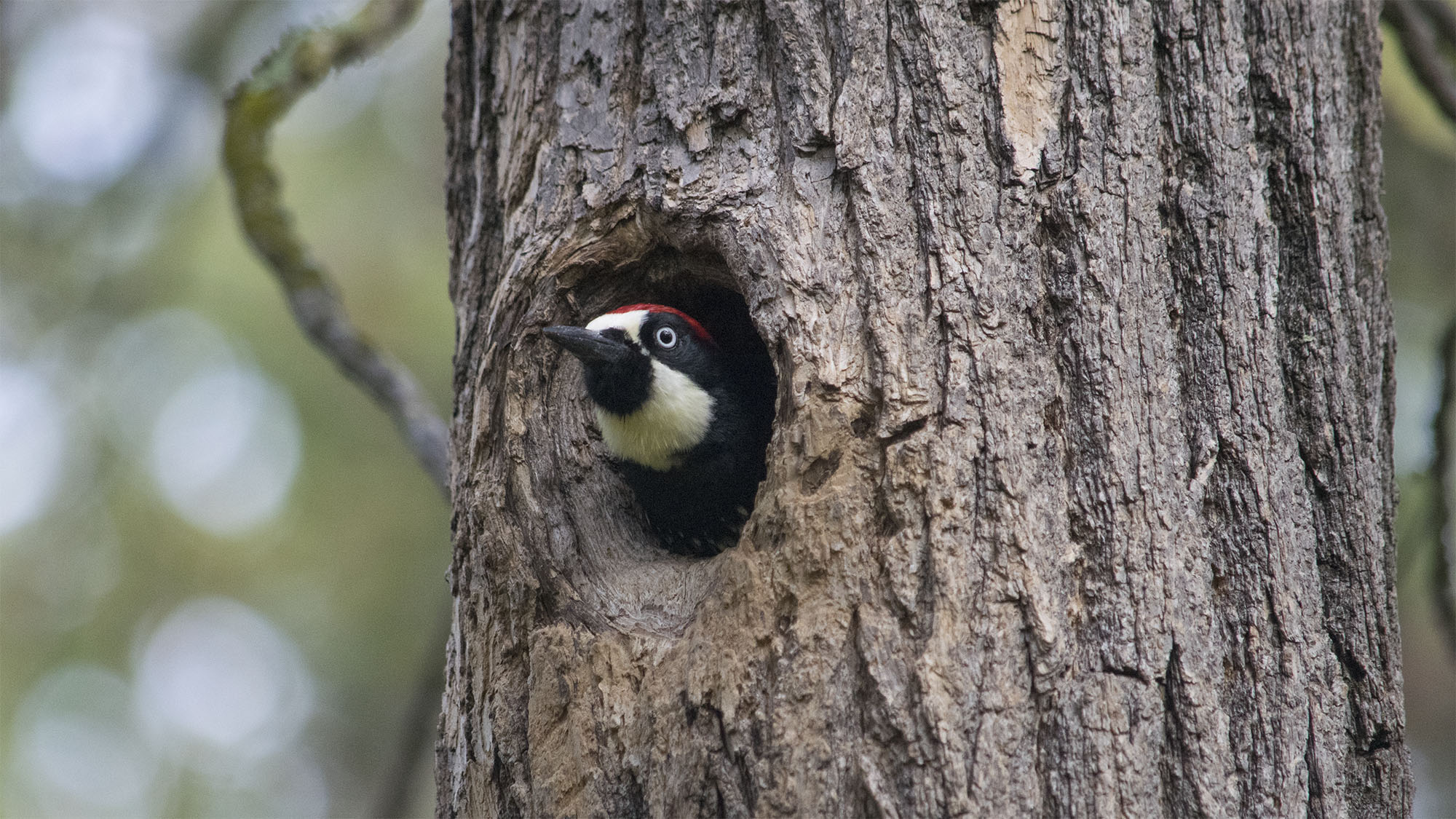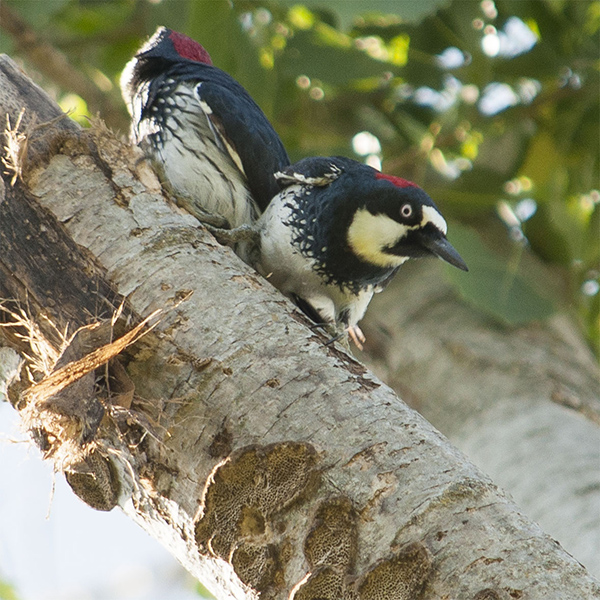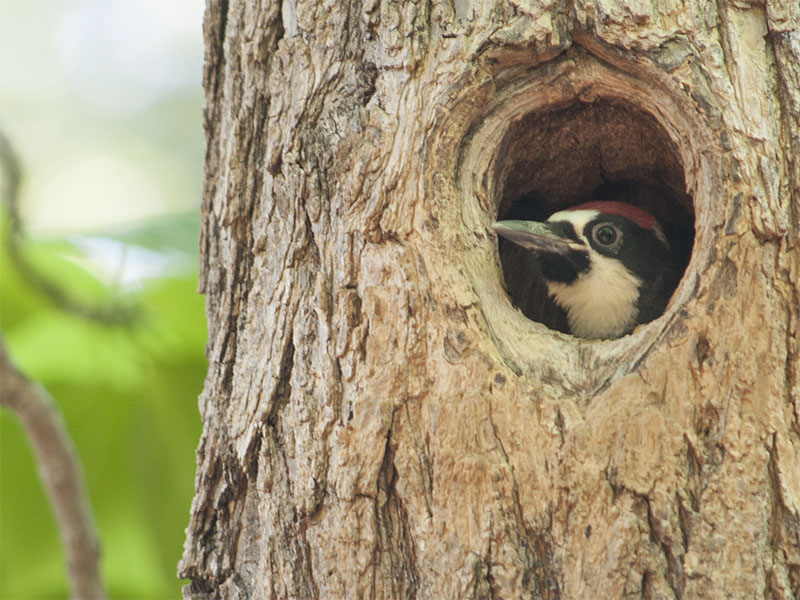Acorn Woodpeckers
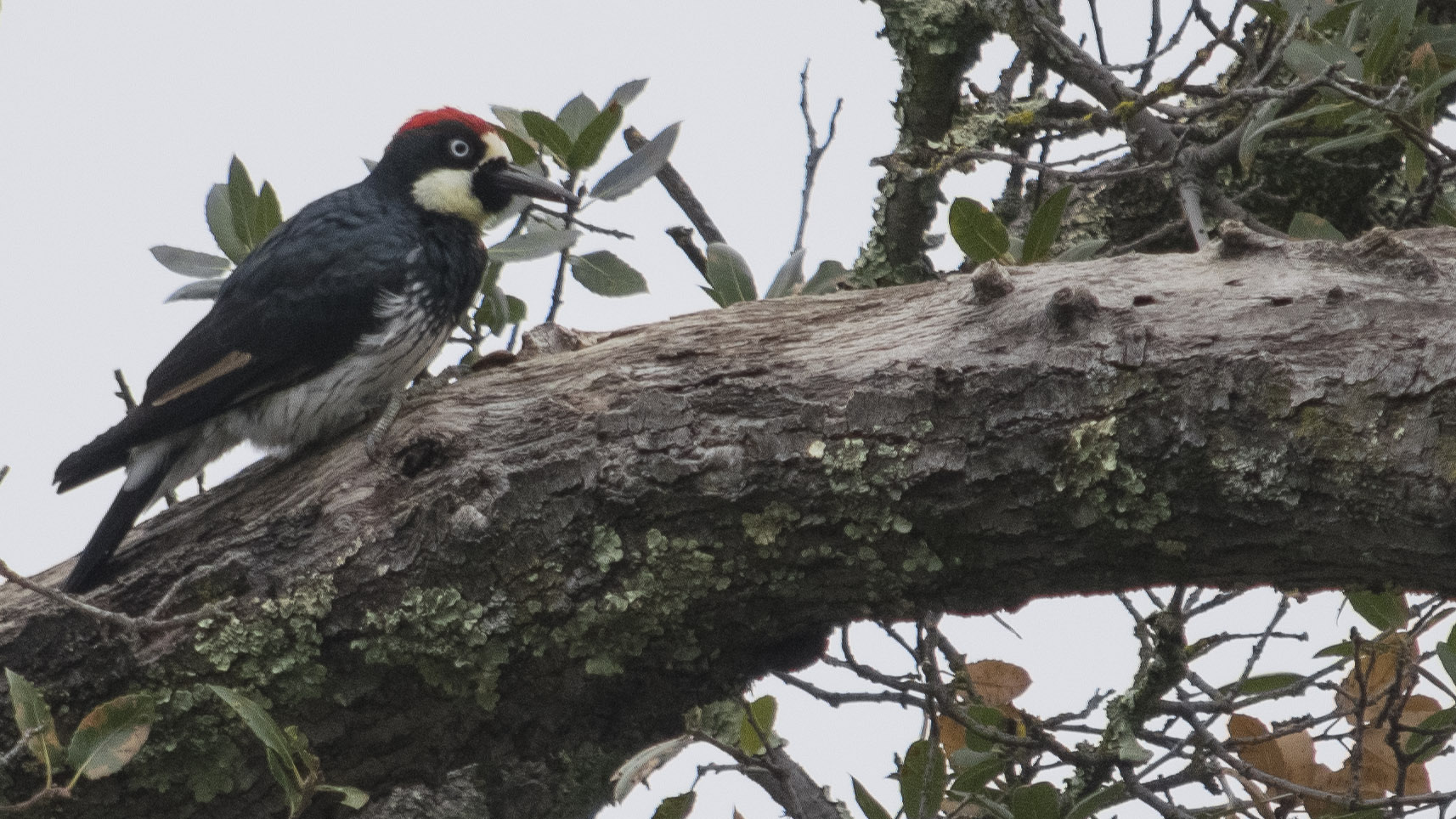
Acorn woodpeckers (AWP) will excavate cavities in dead or living trees to be used for nesting & for spaces to roost in overnight. They often reuse these nest holes for many years. Despite having done all the work to create them they also must compete with other birds such as starlings for the use of these spots.
Catalpa and CA native Freemont Cottonwood trees within the Monte Verde Park wetlands area tend to be a favored tree for AWPs to excavate likely because the wood is soft compared to other trees of the area.
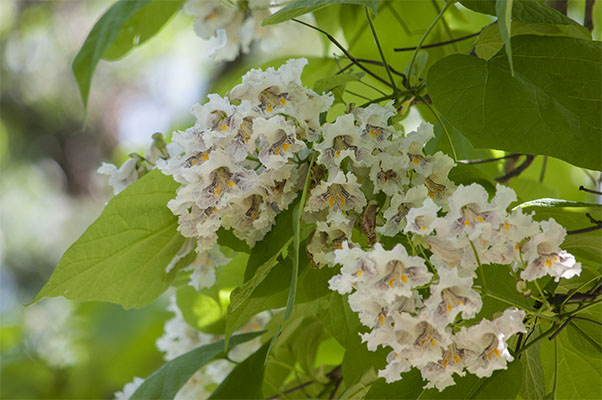
Catalpa trees historically occur in the eastern parts of the US and were cultivated in the 1700s.[1] Most likely they were introduced to California by human settlers who, just like the Acorn Woodpecker, found the fast growing trees to be a good source of workable wood.
The nesting hole in the Catalpa tree occupied by the Acorn Woodpecker in the video below has been used by more aggressive nesting starlings in previous years.
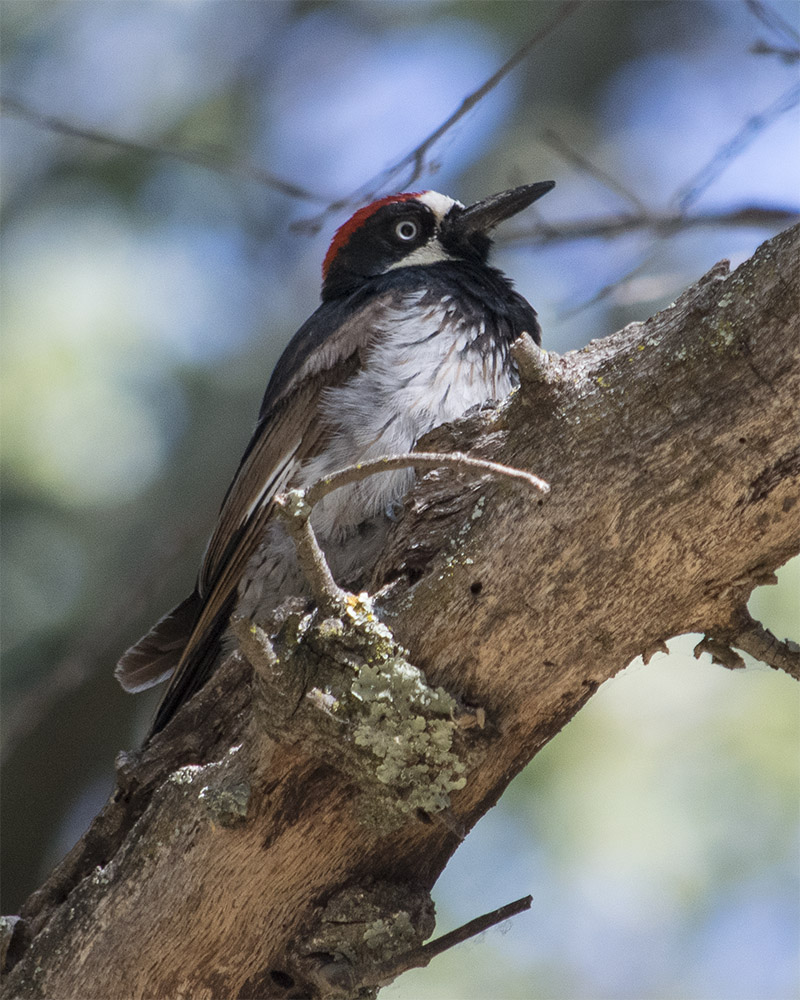
What Do Acorn Woodpecker & Beaver Families Have In Common?
The complex social group behavior of Acorn Woodpeckers makes them unique among all other bird species. They live in family groups of up to 15 individuals that care for a communal nest and cache large stores of acorns for times when food is scarce. Young birds are cared for by multiple parents and sibling helpers.[2] Like beaver families some of the younger offspring stay with the main family group for a few years as helpers. That is likely where the similarity ends however since AWPs are polygamous. Despite this trait studies indicate that inbreeding rarely occurs & it is less likely that females in family groups are related to males. For more about genetics & the social structure of AWPs see this link & video about the long-term study done within the Hastings Natural History Reservation in Carmel Valley, California by biologist Walter Koenig ( The Anomalies: The Acorn Woodpecker, These highly social birds defy the typical two-parent family structure, proving that cooperation can make good evolutionary sense. Produced by Day’s Edge Productions 10.10.2017. ).
What Do Acorn Woodpecker & Beaver Families Have In Common?
The complex social group behavior of Acorn Woodpeckers makes them unique among all other bird species. They live in family groups of up to 15 individuals that care for a communal nest and cache large stores of acorns for times when food is scarce. Young birds are cared for by multiple parents and sibling helpers.[2] Like beaver families some of the younger offspring stay with the main family group for a few years as helpers. That is likely where the similarity ends however since AWPs are polygamous. Despite this trait studies indicate that inbreeding rarely occurs & it is less likely that females in family groups are related to males. For more about genetics & the social structure of AWPs see this link & video about the long-term study done within the Hastings Natural History Reservation in Carmel Valley, California by biologist Walter Koenig ( The Anomalies: The Acorn Woodpecker, These highly social birds defy the typical two-parent family structure, proving that cooperation can make good evolutionary sense. Produced by Day’s Edge Productions 10.10.2017. ).

Acorn Woodpecker Differences Are Easy to Spot.
Acorn Woodpecker males do not have more brilliantly colored plumage than females however where their red “cap” is located on their head is an easy way to spot the difference between a male or female. In male birds the red cap joins the yellow-white feathers at the bird’s forehead area while in the female the red cap is further back on the head such that a band of black feathers separates the yellow white forehead from the red cap (see the female on the right in the following photos).
Another difference between young birds and adults can be seen by looking at the color of their eyes. Baby/juvenile Acorn Woodpeckers have darker irises that will in time change into the light blue seen in adults. The baby woodpecker in the image is peering out from the same Catalpa tree nest hole that is still being used today as seen in the 2021 video above.
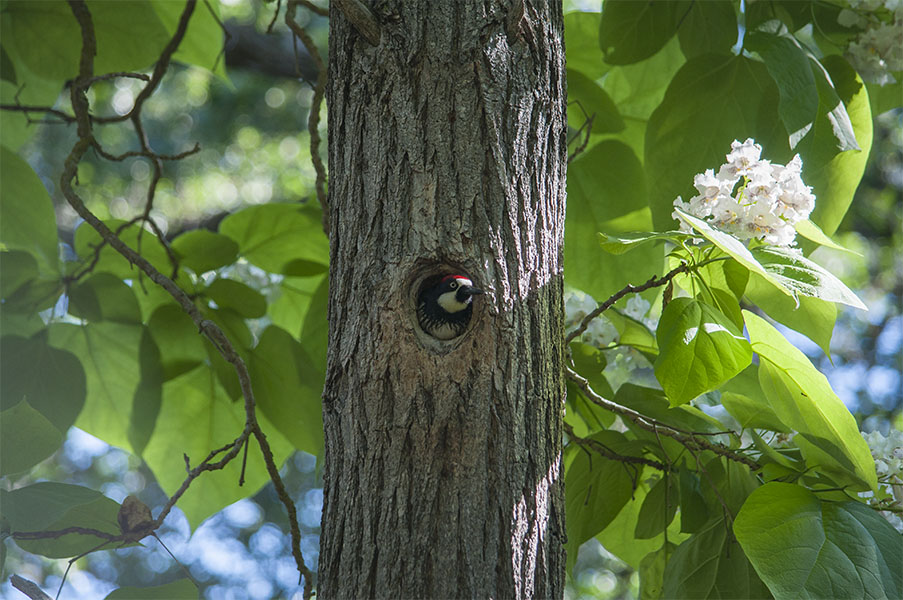
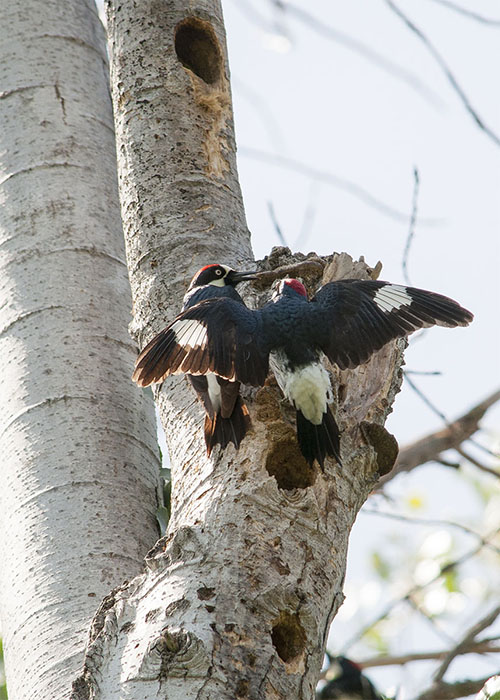
Displaying Acorn Woodpecker, MonteVerde Wetlands, 2015 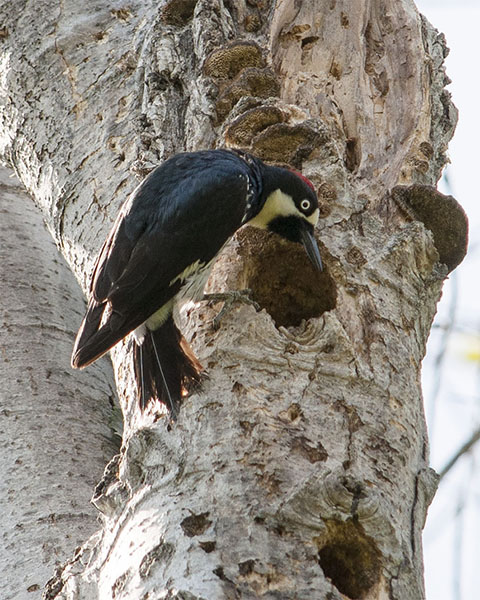
Cottonwood & Acorn Woodpecker, MonteVerde Wetlands, 2015
References
1.) Geyer, Wayne and Patrick Broyles. “Plant Guide: Northern Catalpa.” USDA National Plant Data Center, June 2006.
2.) “Acorn Woodpeckers: An unusual bird of California“, retrieved on 11/15/2021 from website Hastings Natural History Reservation, Acorn Woodpeckers | Hastings Natural History Reservation (hastingsreserve.org)
